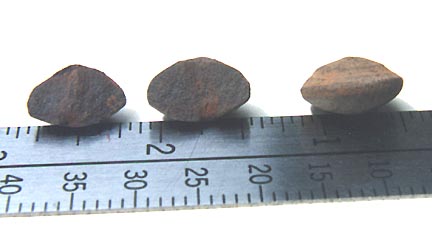“You have presented us with objects that are well outside the things we have encountered before, outside our experience.”
- Art Johnson, Ph.D., Prof. of Geology, Univ. of Pennsylvania


June 6, 2003 Philadelphia, Pennsylvania - Biophysicists W. C. Levengood's observations about the titanium and magnetic quality of the Corguinho, Brazil stones were reinforced by the x-ray diffractometry (XRD) work done May 22-23 at the University of Pennsylvania. Prof. Johnson, whose field is soil analysis, had selected nine objects from my rock trays and collection bags. I also gave him two halves of Stone 2 that Phyllis Budinger had split open. During the first XRD run, he was joined by Prof. Gomaa Omar, an eminent rock expert, and another geologist who specializes in rare earth isotopes. First up was one half of Stone 2, which they called the “button” on the XRD analysis shown below.
Second was a piece of the melted rock that local Corguinho eyewitnesses found in October 2000 after a light came down to the top of a hill and took off again. That rock was arbitrarily labeled “lightening strike” because Dr. Omar said very high temperature had to have been involved.
Click here to subscribe and get instant access to read this report.
Click here to check your existing subscription status.
Existing members, login below:
© 1998 - 2024 by Linda Moulton Howe.
All Rights Reserved.

